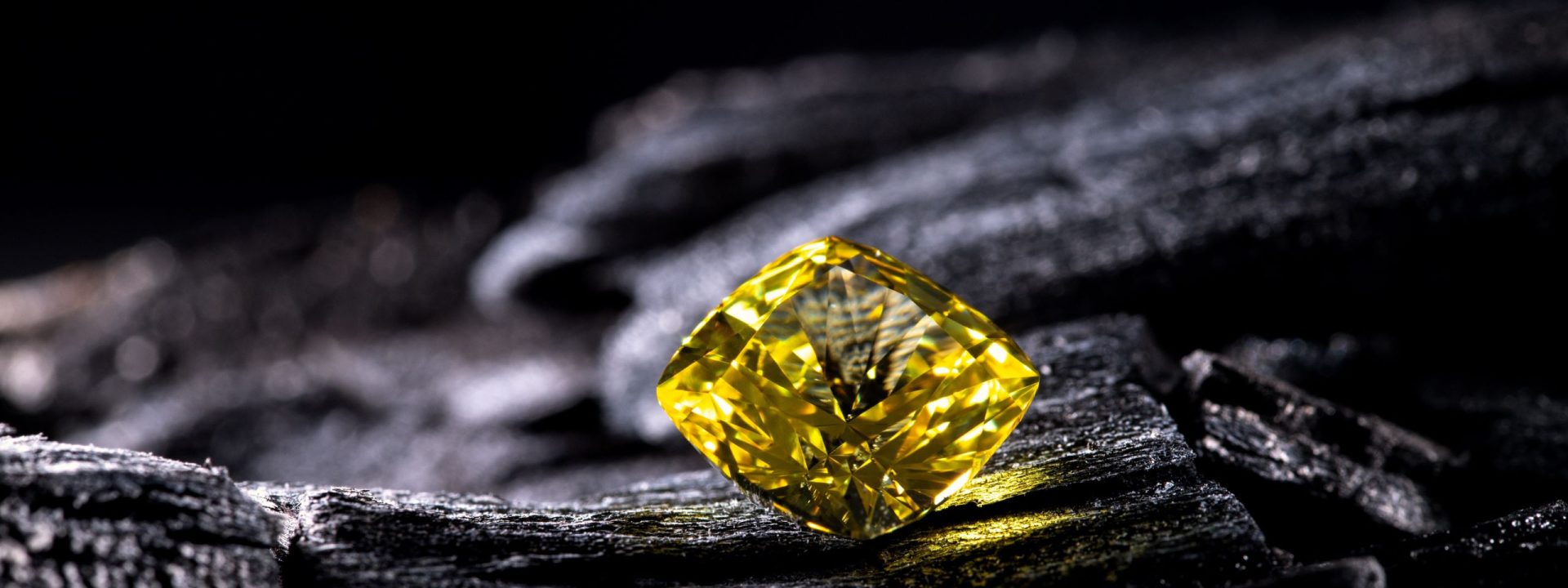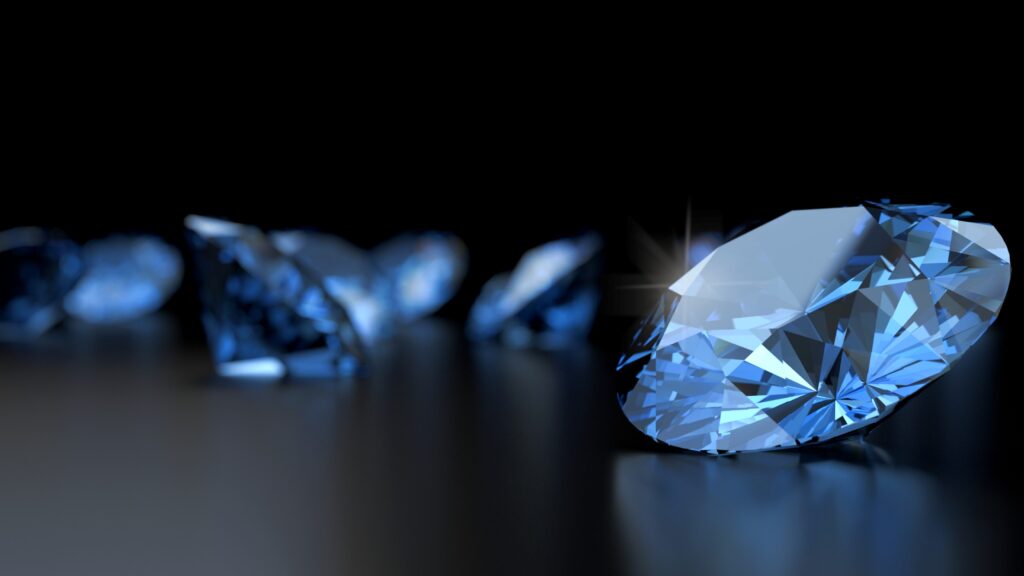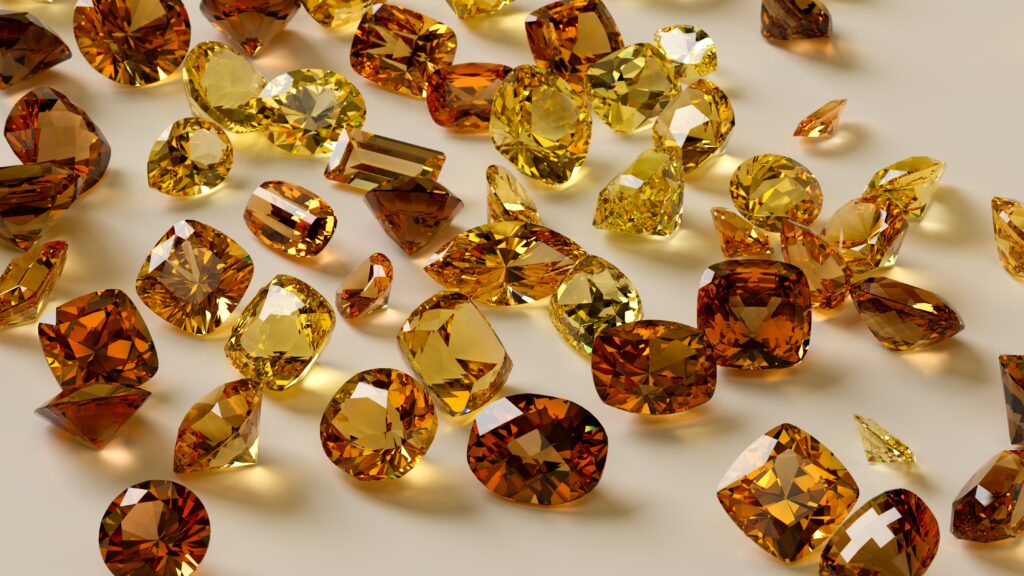


Brown diamonds are the most commonly occurring fancy-colored diamonds. Brown is caused by internal graining, a distortion in the diamond’s crystal structure. This same kind of distortion is also responsible for creating pink and red diamonds. Red and blue are the rarest colors of diamonds. Less than 20 diamonds have so far been certified as red diamond and only 20-30 have ever been mined. Blue diamonds are colored with the trace element boron.
Fancy gray diamonds are colored with hydrogen, as are violet diamonds, whose color leans more towards a gray tone. Green diamonds get their color from being exposed to natural radiation in the earth.
Fancy white diamonds are caused by the scattering of light by thousands of microscopic pinpoint inclusions and have an opalescent look that sets them apart from typical white diamonds.
Black diamonds are actually so heavily included with black crystal that they appear to be solid in color. Irradiation is often used to make the black color look solid; a natural black diamond will have a salt and pepper look under magnification.
An oddity in the fancy-colored world is called the Chameleon diamond. These are typically olive green and can temporarily change color to greenish-yellow when exposed to heat or kept in darkness then exposed to light.
With the advent of the lab-grown diamond, owning a fancy colored diamond has become much more affordable. Even the treasured red, blue, and pink colors are available in lab-grown diamonds.
Do you have diamond jewelry that needs appraising for estate or insurance purposes? Contact us today to get started with our independent appraiser, Elliot Grunwald! Alternatively, if you’re shopping for diamond jewelry, visit Leo Hamel Fine Jewelers on San Diego Avenue! They have a vast collection including natural, lab-grown, vintage, designer, and antique diamond jewelry.